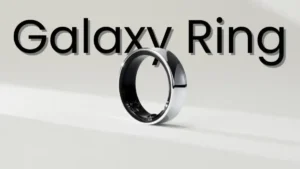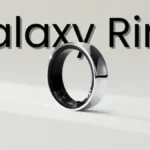Introduction
The Google Pixel 8 Pro is the first Pixel phone to come with a temperature sensor. This sensor is located on the back of the phone, next to the camera module. It can be used to measure the temperature of objects around you, such as food, drinks, and surfaces.
What you can do with the Google Pixel 8 Pro’s temperature sensor

The temperature sensor is a valuable addition to the Pixel 8 Pro, and it has the potential to be used for a variety of purposes. Here are a few examples:

Food safety
The temperature sensor can be used to ensure that food is cooked to a safe temperature. This is especially important for foods that are susceptible to foodborne illness, such as poultry and meat.
Baby care
The temperature sensor can be used to check the temperature of baby food, bathwater, and other items. This can help to prevent accidents and ensure that the baby is comfortable.
Home improvement
The temperature sensor can be used to check the temperature of your home, identify hot spots, and troubleshoot HVAC problems. This can help you to save energy and improve the comfort of your home.
Science and Education
The temperature sensor can be used for a variety of science experiments and educational activities. For example, students can use the sensor to measure the temperature of different substances, track the temperature of the environment over time, or investigate the relationship between temperature and other variables.
In addition to these specific use cases, the temperature sensor can also be used for a variety of other purposes. For example,
- Monitor the temperature of your car engine, swimming pool, or compost bin.
- Check the temperature of your soil before planting.
- Identify overheated electronic devices.
- Track the temperature of your home during a power outage.
- Measure the temperature of objects in remote locations.
The Google Pixel 8 Pro’s temperature sensor is a versatile tool that can be used for a variety of purposes. It is a valuable addition to the Pixel 8 Pro, and it makes the phone even more useful for both personal and professional use.

Here are some additional tips for using the Google Pixel 8 Pro’s temperature sensor:
- To get the most accurate reading, hold the sensor close to the object you want to measure.
- Try to avoid holding the sensor in direct sunlight or near other heat sources.
- If you are measuring the temperature of a liquid, be sure to stir the liquid before measuring.
- If you are measuring the temperature of a solid, be sure to measure a flat surface.
- You can use the Google Pixel 8 Pro’s temperature sensor to measure the temperature of objects in both Celsius and Fahrenheit. To change the temperature unit, go to Settings > System > Languages & input > Advanced > Temperature units.
What you can’t do with the Pixel 8 Pro temperature sensor
While the Google Pixel 8 Pro’s temperature sensor is a versatile tool, it is important to note that it has some limitations. Here are a few things you cannot do with the Pixel 8 Pro temperature sensor:
Measure body temperature:
The Pixel 8 Pro’s temperature sensor is not designed to measure body temperature. It is not accurate enough to be used for medical purposes.
Measure the temperature of objects that are too hot or too cold:
The Pixel 8 Pro’s temperature sensor has a limited temperature range. It cannot measure the temperature of objects that are hotter than 110 degrees Celsius (230 degrees Fahrenheit) or colder than -10 degrees Celsius (14 degrees Fahrenheit).
Measure the temperature of objects that are moving or changing temperature rapidly:
The Pixel 8 Pro’s temperature sensor needs a few seconds to get an accurate reading. It is not ideal for measuring the temperature of objects that are moving or changing temperature rapidly.
In addition to these specific limitations, it is important to keep in mind that the Google Pixel 8 Pro’s temperature sensor is still under development. Google is working to improve the sensor’s accuracy and functionality over time.
Conclusion
Overall, the Google Pixel 8 Pro’s temperature sensor is a valuable addition to the phone. It is a versatile tool that may be used for a wide range of tasks. However, it is important to be aware of the sensor’s limitations and to use it appropriately.









